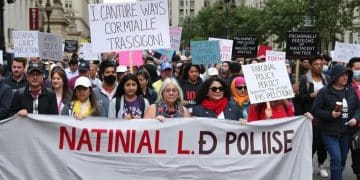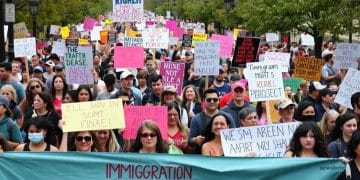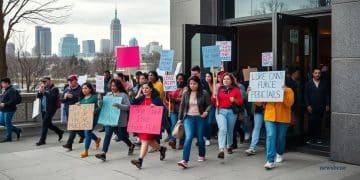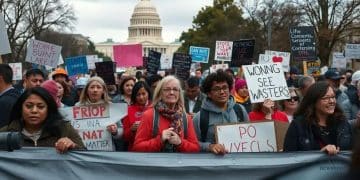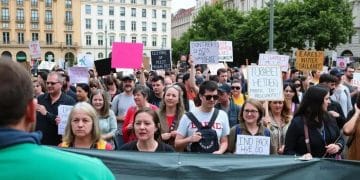Nonviolent acts of civil disobedience that inspire change
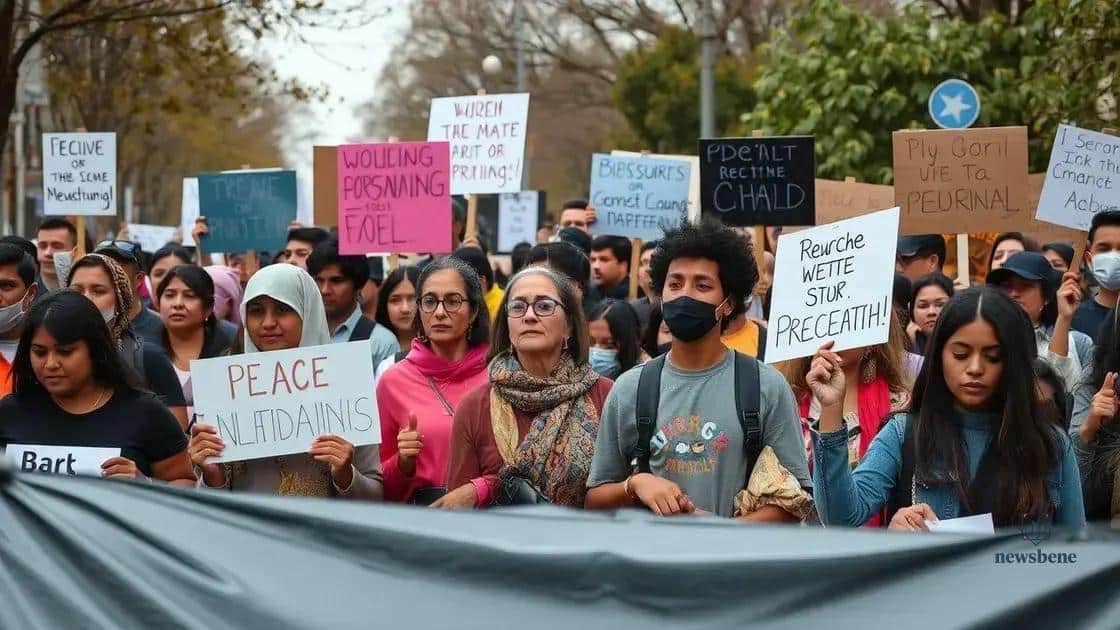
Nonviolent acts of civil disobedience are powerful methods of social change that challenge injustice through peaceful protests, influencing legislation, and fostering community support.
Nonviolent acts of civil disobedience have a unique power to challenge injustice and mobilize communities. Have you ever wondered how peaceful protests can lead to significant societal change? Let’s dive into the history and impact of these profound actions.
Understanding nonviolent civil disobedience
Understanding nonviolent civil disobedience is crucial for appreciating its role in social movements. This form of resistance has a long history and has inspired many to take a stand against injustice.
At its core, nonviolent civil disobedience involves peacefully disobeying laws or regulations to bring attention to perceived injustices. It is a powerful way to voice dissent while maintaining moral high ground. Notable leaders like Mahatma Gandhi and Martin Luther King Jr. have successfully employed such tactics to advocate for change.
The principles of nonviolent civil disobedience
There are several key principles that define nonviolent civil disobedience. These principles guide those who choose this path:
- Respect for others, even opponents
- Commitment to dialogue and understanding
- Willingness to accept consequences
- Focus on issues, not individuals
These principles foster an environment where constructive dialogue can take place. By committing to nonviolence, activists draw attention to their cause without resorting to aggression.
Historical context
The effectiveness of nonviolent civil disobedience can often be traced through historical events. For example, during the Civil Rights Movement in the United States, nonviolent protests fought segregation laws. Demonstrations, sit-ins, and marches captured public attention and were instrumental in bringing about legislative change.
Such actions demonstrate that nonviolent civil disobedience can be a catalyst for transformation. When individuals stand together for their beliefs, they can inspire entire communities to join their cause.
Understanding the impact of nonviolent civil disobedience helps us appreciate its continuing relevance today. Whether in climate activism or social justice, this form of protest remains a vital tool for change.
Historical examples of nonviolent resistance
Throughout history, many movements have utilized nonviolent resistance to fight for justice and equality. These movements demonstrate how peaceful actions can lead to profound change.
One significant example is the Indian independence movement led by Mahatma Gandhi. Gandhi’s strategy focused on nonviolent protests, such as the Salt March in 1930. This event mobilized thousands and challenged British colonial rule peacefully, inspiring many worldwide.
The Civil Rights Movement
Another critical instance of nonviolent resistance occurred during the Civil Rights Movement in the United States. Leaders like Martin Luther King Jr. organized peaceful protests, marches, and sit-ins to confront racial segregation. Events like the 1963 March on Washington galvanized support for civil rights legislation.
- Use of sit-ins to challenge segregated spaces
- Peaceful marches to raise awareness
- Boycotts as effective forms of protest
These actions brought national and international attention to the fight for equality, showcasing the power of nonviolent civil disobedience.
Moreover, the anti-apartheid movement in South Africa is a powerful example of nonviolent resistance. Figures like Nelson Mandela and Desmond Tutu played pivotal roles in promoting peaceful protests against the oppressive apartheid regime. Their commitment to nonviolence significantly contributed to the eventual dismantling of apartheid in the 1990s.
Understanding these historical examples highlights the effectiveness of nonviolent resistance in mobilizing individuals and enacting social change. The lessons learned from these movements continue to influence activists today.
The philosophy behind nonviolent action
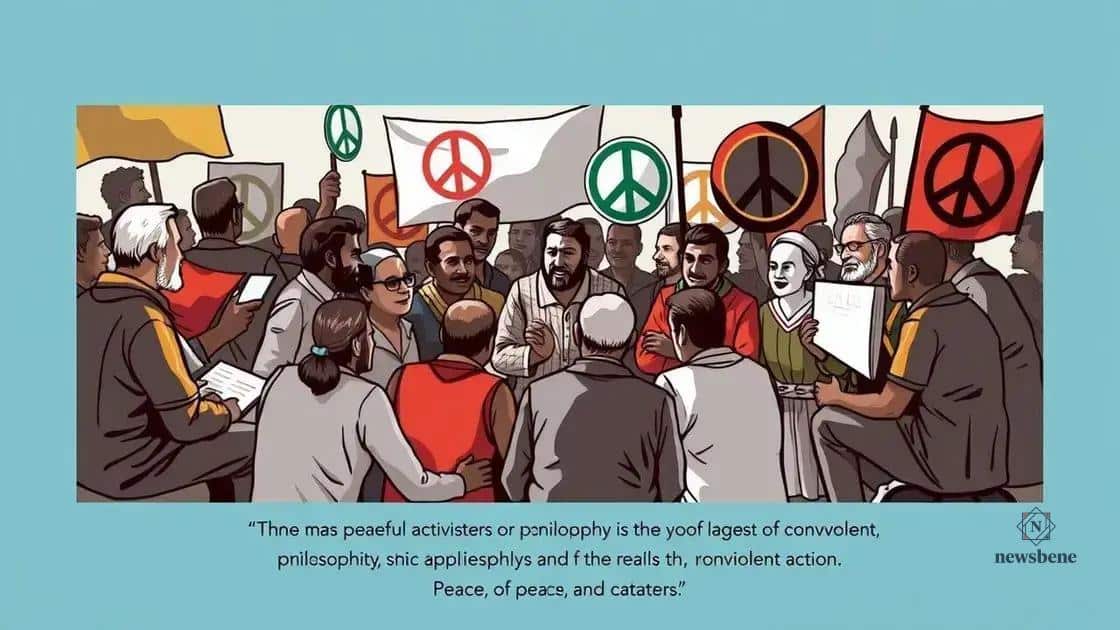
The philosophy behind nonviolent action is rooted in the belief that change can be achieved without resorting to violence. This approach emphasizes the power of peaceful protest and dialogue to challenge injustice.
At its core, the philosophy advocates for moral courage and the ability to confront oppression without harming others. Activists using this method seek to create a climate of understanding, aiming to persuade opponents rather than defeat them through force.
Key principles of nonviolence
Several key principles define the philosophy of nonviolent action:
- Respect for all individuals: Nonviolence promotes understanding and empathy, recognizing the humanity of every person, including adversaries.
- Willingness to accept consequences: Activists often face arrest or other penalties, yet they remain committed to their cause, demonstrating their resolve.
- Focus on the issue, not personal conflict: Nonviolent action addresses systemic problems rather than individuals, helping to foster dialogue.
These principles create a strong foundation for social movements that utilize nonviolent strategies. Additionally, they encourage a shift in mindset towards cooperation and understanding in the face of challenges.
Influential thinkers
The philosophy has been shaped by prominent figures, such as Mahatma Gandhi and Martin Luther King Jr. Their writings and speeches emphasize the importance of nonviolence as a powerful tool for change.
For instance, Gandhi’s concept of satyagraha revolves around truth-force, which supports the idea that justice can be achieved through peaceful means. King further expanded on these ideas by incorporating love and understanding into his vision for social change.
This philosophy continues to inspire modern movements, reminding activists that nonviolence can lead to significant social and political progress.
Effects of nonviolent disobedience on society
The effects of nonviolent disobedience on society are profound and far-reaching. This form of protest can initiate significant social and political change by raising awareness and sparking dialogue.
One major effect is the shift in public perception. When people observe peaceful protests, they often feel compelled to consider the issues being raised. This can lead to increased empathy and support for the cause, as nonviolent action encourages discussion rather than division.
Influencing legislation
Nonviolent disobedience has historically influenced changes in laws and policies. For instance, during the Civil Rights Movement, acts of peaceful protest led to key legislative changes, including the Civil Rights Act of 1964. Such changes demonstrate how collective peaceful action can pressure governments to respond to the will of the people.
- Increased awareness: Nonviolent protests draw media attention, amplifying the message to a wider audience.
- Encourages civic engagement: People inspired by nonviolent action may become more actively involved in their communities.
- Long-lasting impacts: The ethical principles behind nonviolent resistance can foster lasting cultural changes towards justice and equality.
Furthermore, the moral high ground taken by nonviolent activists often wins broad sympathy from diverse groups. This unity is critical for building coalitions and alliances, which can strengthen movements significantly.
Cultural and social shifts
Nonviolent disobedience also contributes to cultural changes. It fosters a shared commitment to justice and encourages future generations to adopt peaceful strategies in their own activism. As these movements gain success, they inspire others to fight for their own causes.
Additionally, the legacy of nonviolent actions can influence art, literature, and education, embedding these values in society. Over time, this can lead to a more peaceful and just world where individuals are empowered to stand up against injustice without resorting to violence.
Strategies for effective civil disobedience
Strategies for effective civil disobedience are essential for achieving meaningful change. By employing specific tactics, activists can maximize their impact while maintaining the principles of nonviolence.
To begin, planning is crucial. Understanding the goals of the action helps in designing effective protests. Activists need to identify their objectives clearly, whether it’s raising awareness, influencing public opinion, or pushing for legislative changes.
Choosing the right methods
Different methods of civil disobedience can be chosen based on the context of the situation. Some popular techniques include:
- Peaceful protests: Organizing marches, rallies, or sit-ins to publicly demonstrate a position.
- Boycotts: Encouraging consumers to refrain from purchasing goods from companies that support injustice.
- Blockades: Peacefully obstructing access to places that represent the unjust system.
Each method has its own strengths and can be powerful in addressing specific issues. The chosen methods should align with the values of the movement to maintain credibility and invite broader support.
Building a community
Another effective strategy is building a strong community of supporters. Having a dedicated group allows for better coordination and outreach. Activists can hold regular meetings to discuss strategies, plan actions, and maintain enthusiasm among supporters.
Effective communication is vital in fostering solidarity. Using social media and other platforms to share updates can help engage a wider audience. Additionally, creating informative materials helps educate supporters and the public about the goals and values behind the movement.
Moreover, collaborating with local organizations and other activists can broaden the reach of the civil disobedience effort. Forming coalitions with like-minded groups can amplify the message and maximize resources.
Lastly, maintaining a commitment to nonviolence throughout all actions not only preserves the moral standing of the movement but also invites sympathy and support from the public. When people see peaceful protests, they are more likely to join in and lend their voices to the cause.
FAQ – Frequently Asked Questions about Nonviolent Civil Disobedience
What is nonviolent civil disobedience?
Nonviolent civil disobedience is a form of protest where individuals peacefully disobey laws or regulations to challenge injustice and promote social change.
How can nonviolent resistance impact society?
Nonviolent resistance can raise awareness, shift public perception, influence legislation, and inspire future generations to advocate for justice.
What are some effective strategies for civil disobedience?
Effective strategies include peaceful protests, boycotts, building community support, and maintaining a commitment to nonviolence.
Who are some influential figures in nonviolent civil disobedience?
Prominent figures include Mahatma Gandhi and Martin Luther King Jr., who advocated for nonviolence in their respective movements for justice.

